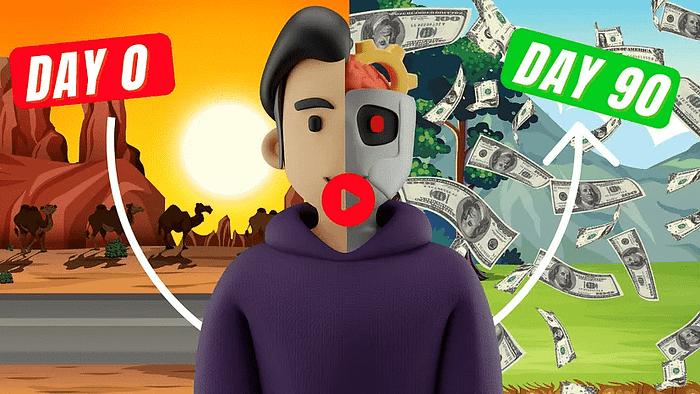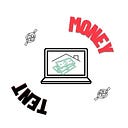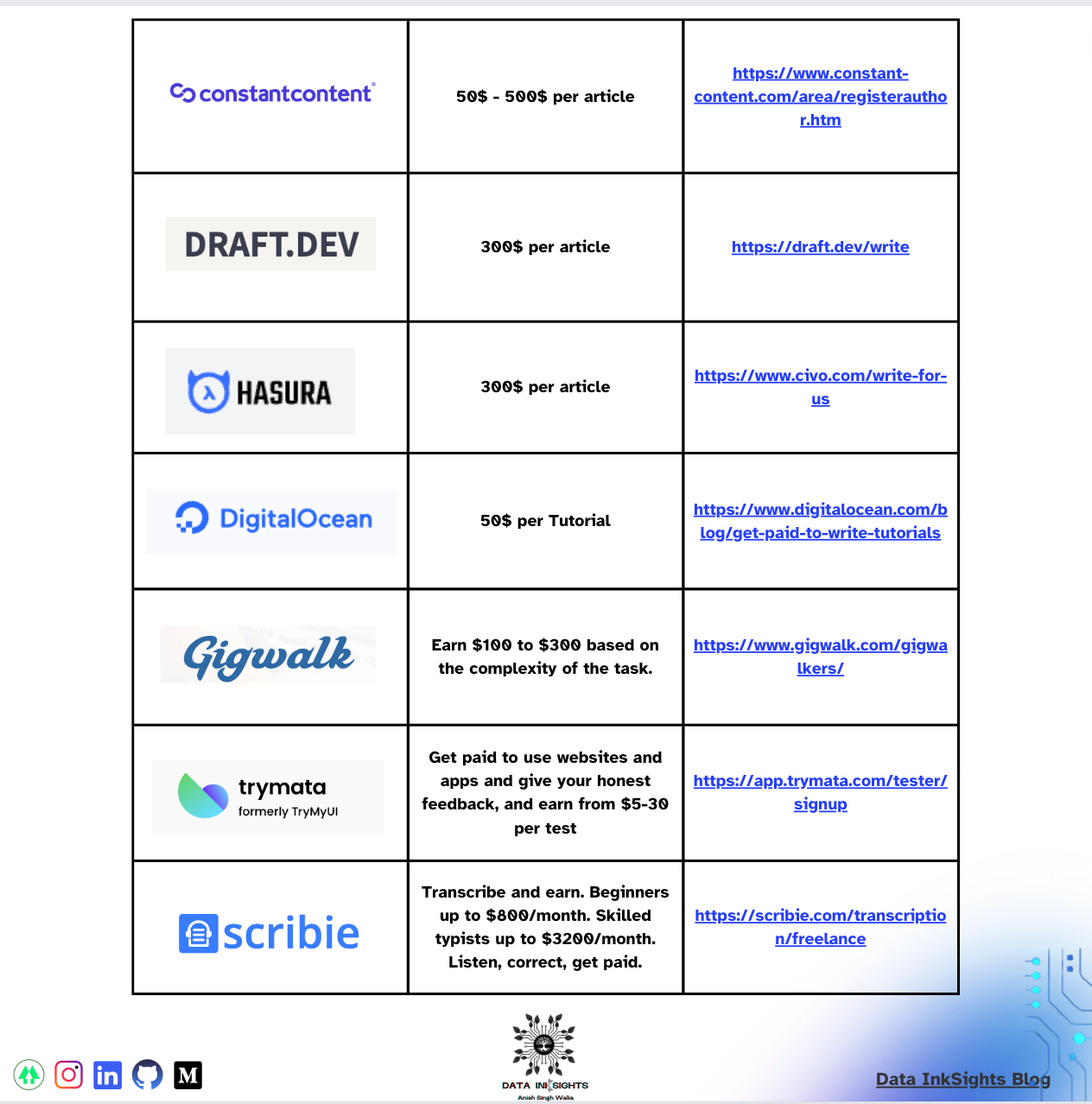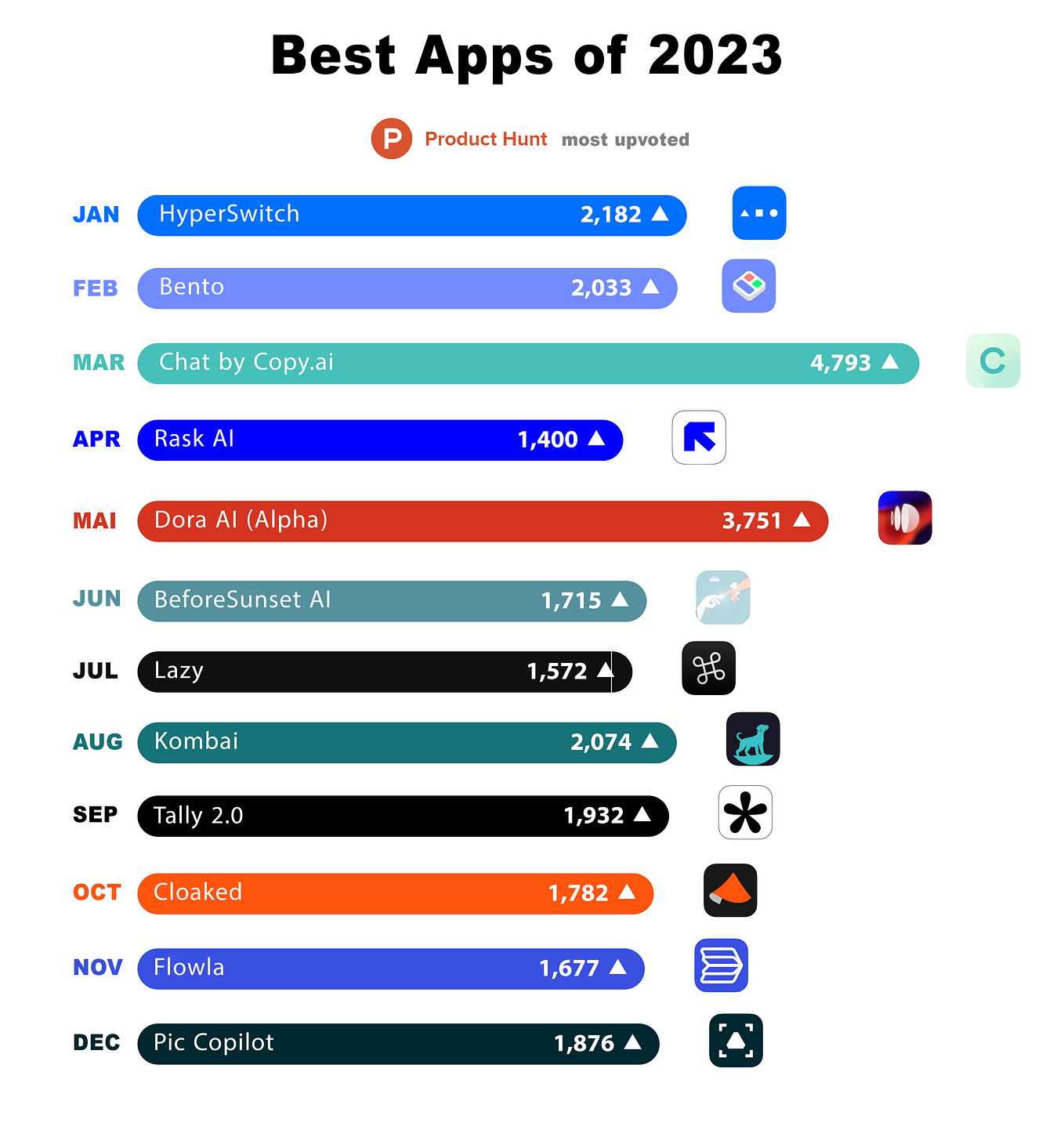How To Start A $5,000,000 Business With Zero Stress
My journey from startup burnout to finding freedom through creating online courses and digital products
Sitting down with a coffee early one chilly January morning, I reflected on the wild journey that led me here. Just a few years ago, I was at the peak of my career, serving as VP of Sales at a fast-growing healthcare startup. But after a decade grinding in Silicon Valley, I had burned out hard.
Overeating, overdrinking, not sleeping — I was a mess. I wasn’t being a good husband, friend or son. Then came the panic attack. Hallucinating and screaming, I collapsed on all fours. My wife called 911. The day the paramedics carried me out marked a turning point. I knew I needed to do something different.
Quitting my lucrative job, I decided to try working for myself. Just temporarily, I thought. But 5 years later, I’m still here — and business is booming. My one-person business recently surpassed $5 million in revenue. And I built it without any ads, with a 92% profit margin.
How did I pull it off? Well, it started with a simple but powerful mindset shift: life first, business second. Building a company that supports your ideal lifestyle, not the other way around. Once I embraced that philosophy, the rest fell into place.
In this article, I’ll walk you through my journey, from startup burnout to startup success. I’ll share how I turned my skills into online courses and products, built an audience, and scaled revenue. And most importantly, how you can build a business to support the life you want too. Let’s get into it!
We strongly recommend that you check out our guide on how to take advantage of AI in today’s passive income economy.
From High-Growth Startups to Complete Burnout
After college, I plunged right into the world of high-growth startups. First was a 5 year stint in NYC at a tech company called Zach. It was an intense environment — people constantly getting fired, working grueling hours.
Somehow I survived, working my way up to VP of Sales. When Zach got acquired, I took that role at another startup called PatientPop. My job was to build the sales and marketing teams from scratch.
Over 5 years, I helped grow PatientPop from $0 to $70 million in recurring revenue. It was an awesome learning experience. But there was a cost. The company was scaling fast. Everything felt urgent and important. Problems kept piling up faster than I could solve them.
This relentless pressure pushed me to the brink. I coped in all the wrong ways — by overeating, overdrinking, and undersleeping. In December 2018, after a decade in startups, I had my first panic attack.
Screaming and hallucinating, I collapsed on the floor. My wife called an ambulance. As the paramedics checked my vitals, I knew something had to change. This high-pressure lifestyle was destroying me.
I decided to leave PatientPop, though it took 7 more grueling months. Those months took a toll. By the time I turned in my resignation, I’d gained 30 pounds. I was burned out to the core.
But I also saw my next chapter as a chance to reinvent myself. To build a business that supported my ideal lifestyle — not the other way around. Escape the vicious cycle so many entrepreneurs and professionals fall into. This simple but profound idea would guide everything that followed.
Getting Started Online: Choosing a Platform
When I left my job in mid-2019, I planned to take 6 months off. Then maybe get another corporate role. But first, I wanted to dabble with generating income online. See if I could make it work.
Problem was, I had zero experience with social media or making money online. My skills were traditional business development — sales, marketing, management. Hardly useful on YouTube or Instagram.
So how did I get started?
Well, I didn’t dive straight into creating courses or selling consulting. Or even try to “build my brand”. I started simple — by sharing my business knowledge on a platform I was already familiar with.
That platform was LinkedIn. Back then, it felt safer than other networks that seemed hostile or saturated. I joined groups, published posts, and engaged with other professionals.
Slowly, I built an audience interested in my experience scaling startups. I wrote about building sales development teams, inbound marketing, customer success — topics I knew like the back of my hand.
The key was consistency. I wasn’t worried about being clever or contrarian. I simply documented my knowledge from 10 years in business.
Within a few months, I’d built a small but engaged following. This was the foundation for everything that followed. Including my first digital product.
Turning Your Knowledge Into Products
As my LinkedIn audience grew, I started getting lots of questions. Many were about the platform itself:
- How are you getting so much engagement?
- What tools do you use?
- When and how often are you posting?
I wasn’t interested in becoming a LinkedIn coach. But I realized people wanted help growing their own networks and connecting with professionals.
So I decided to package my process into a product — the LinkedIn Playbook. This 60 minute video course cost just $50. It covered everything from optimizing your profile to engaging with your network.
The Playbook was a hit, earning over $75,000 in 18 months. This was my first taste of passive income. I’d put in the upfront work, but could earn while I slept. It showed me the power of selling digital knowledge products.
Since then, I’ve refined my process for successfully creating digital courses:
Start by Solving a Specific Problem
Look at the conversations happening in your community. Identify a common question or point of frustration. Resist the urge to create something broad. Niche courses tailored to specific problems convert better.
For the Playbook, I knew engagement was a pain point from all the questions I received. So I focused the course entirely on that one topic.
Teach it to a Fourth Grader
The best way to become a great teacher is to teach difficult concepts simply. Explain what you know to a child. Get feedback. Refine your language and frameworks.
If you can get a fourth grader to understand LinkedIn optimization, you can get anyone to understand it. Simple, clear communication makes for great courses.
Price Low to Build Trust
When launching your first product, aim for maximum perceived value. Price as low as you can sustainably manage. This builds immense trust and goodwill with your audience.
I could have priced the Playbook at $500+. Instead I went with $50. This earned me a reputation for overdelivering — crucial for marketing future courses.
Following this simple framework, you can turn your expertise into lucrative knowledge products. They don’t have to be complicated. Identify core problems and teach the solutions clearly.
Growing My Audience Across Social Platforms
While products like the Playbook were generating revenue, I knew that growing my audience was crucial for long-term success.
The wider my reach, the more potential customers I’d have. In the early days, I focused solely on LinkedIn. But over time I expanded to other platforms like Twitter, Facebook and YouTube.
However, I didn’t just blanket the internet with recycled content. That shotgun approach rarely works. Instead, I was strategic about which networks to prioritize:
- Start where you have expertise — For me, it was business topics on LinkedIn and Facebook groups. Don’t force using platforms that don’t align with your knowledge base.
- Double down on what’s working — I consistently invested most time in platforms showing clear audience growth and engagement.
- Diversify slowly — Only expand to new networks once you have a solid foundation on your core platform. Jumping around too quickly dilutes your efforts.
- Tailor content, don’t recycle — Every platform has a distinct audience. Tailor your posts, videos and messaging accordingly. Repurposing seldom works.
- Always be testing — Not every network will be a fit. Try posting consistently for 2–3 weeks. If the metrics disappoint, re-evaluate. Testing allows you to prune what doesn’t work.
Patience and persistence were crucial. Social media is a long game, not a sprint. But over years of posting multiple times per day, my audience grew into the tens of thousands. This provided the launch pad for higher tier products.
Scaling Revenue Through Courses
After finding product-market fit with the LinkedIn Playbook, I knew I could teach business topics online. But could I create a premium course people would pay $500+ for? That was the next hurdle.
I started by surveying my audience to identify their biggest struggles and knowledge gaps. What problems did they want to solve, or skills did they want to gain?
I noticed many wanted to gain traction on LinkedIn and turn connections into clients. But few knew how to create effective sales funnels or build authority.
So that became the focus of my flagship course — the Cold Outreach Masterclass. Priced at $997, it covers all aspects of social selling, from optimizing profiles to automating outreach.
To ensure the Masterclass delivered massive value, I drew on all my sales experience building teams at startups. The course is packed with battle-tested frameworks, scripts and strategies.
I also filmed hours of video content, created downloadable guides, spreadsheets and other assets. This created a comprehensive A-Z system for mastering social selling.
The final step was marketing. I leveraged my audience on LinkedIn and Facebook to promote the launch through ads, organic posts and email.
The result?
The Masterclass blew past my modest first year goal, selling over $300,000. And it’s scaled successfully since, with over 16,000 students enrolled to date.
Beyond the revenue impact, it’s gratifying knowing I’ve helped so many professionals master social selling. The Masterclass has a sky-high rating, with many calling it a career changer.
For anyone looking to create premium online courses, my biggest piece of advice is this:
Solve a pressing problem for your audience
Don’t focus on what you want to teach. Start by understanding your audience’s biggest challenges. Let that guide your course development.
I built the Masterclass around social selling because I knew it was a pain point. That’s why it resonated so strongly. The more clearly your course addresses core frustrations, the better it will convert.
Maintaining Balance As a Solo Entrepreneur
In just a few years, I’d gone from burnt out startup exec to successful solo entrepreneur. I’d achieved my goal of building a location independent business that provided time and financial freedom.
But I’m always conscious about avoiding burnout in this next chapter. My mantra remains: life first, business second.
Here are some ways I maintain work-life balance while scaling my business:
Develop a routine that supports you
I start each day the same way — coffee and chatting with my wife, then social media. I also walk 5–7 miles or hit the gym daily.
Building in non-negotiable time for health and family keeps me grounded. Don’t let your business calendar take over.
Outsource what you can
My goal is to spend time on high-value creative tasks — course development, content creation, community building.
Any administrative or technical tasks that I can afford to, I outsource. This buys back time for what truly moves the needle.
Remember your “why”
When things get stressful or I’m burning midnight oil, I reflect on why I started this journey. It was to create freedom and flexibility, not chain myself to a laptop. Avoiding those reminders is when people get off track.
Unplug frequently
I take regular digital detoxes where I completely disconnect for 1–2 weeks. No social media, no email. This provides much needed perspective. Don’t let nonstop connectivity burn you out.
By sticking to these principles, I’ve avoided repeating past mistakes. My business continues growing rapidly but sustainably. And I’m loving life outside of work as much as ever.
Key Takeaways
If you’re looking to escape burnout and build a scalable online business that supports your ideal lifestyle, here are some key tips:
- Life first, business second — Design a company that fits your needs, not the opposite. Make time for health, family and other priorities.
- Start simple — You don’t need expertise in social media or marketing. Share your knowledge on networks you already use. Consistency compounds.
- Turn knowledge into products — Identify common problems your audience faces. Create digital courses or tools that solve those problems clearly and comprehensively.
- Grow audience channels slowly — Build a strong foundation on one platform before expanding. Tailor content to each network. Prune what doesn’t work.
- Outsource wisely — Focus your time on high-value creative tasks only you can do. Automate and outsource the rest.
- Stay grounded in your “why” — Reflect often on your initial motivations. Don’t get so caught up in the scaling process that you lose yourself.
I hope this gives you ideas and inspiration for building your own ideal lifestyle business! It takes persistence and grit, but escaping the corporate grind and achieving freedom is so rewarding.
Wishing you much success! Now get out there and make it happen. We strongly recommend that you check out our guide on how to take advantage of AI in today’s passive income economy.
We strongly recommend that you check out our guide on how to take advantage of AI in today’s passive income economy.
1
Make Money Online
Business
Startup
Money
Wealth
1 Follow
Follow
Written by Money Tent
3.1K Followers
Money Tent offers cutting-edge online money-making strategies for beginners to leverage before they lose their appeal. 🤑 https://highticketaisystem.gr8.com/
More from Money Tent

 Money Tent
Money Tent
12 Amazing AI Tools That Are Surprisingly FREE!
Navigating the Sea of AI Tools with Future Tools
4 min read
·
Dec 15, 2023
966
14
 Money Tent
Money Tent
Top 5 AI Tools That Are BETTER Than ChatGPT, But Nobody is Using Them
Exploring Lesser-Known Alternatives Transforming the Tech Landscape
4 min read
·
Dec 24, 2023
871
11
 Money Tent
Money Tent
Quick $65/Hour Simple AI Side Hustle For Beginners to Make Money Online In 2024
How I Make $50-$65 Per Hour Online Without Selling Anything
5 min read
·
Jan 4
965
20
 Money Tent
Money Tent
8 Best AI Tools for Research in 2024
Navigating the Cutting Edge of Research with AI Assistants
5 min read
·
Dec 8, 2023
325
6
Recommended from Medium

 Financeable
Financeable
12 Side Hustles You Can Do From Your Phone ($600+ Per Day)
Let’s be honest, if you’re reading this article, you probably have a phone or a laptop. And with this thing, you can make as much as $600…
13 min read
·
Dec 25, 2023
5.2K
89
 The PyCoach
The PyCoach
in
Artificial Corner
OpenAI Just Released The GPT Store. Here’s How To Use It And Make Money With Your GPT
Learn how to publish your GPT to the store and monetize it.
·
5 min read
·
4 days ago
1K
10
Lists


 Business 10125 stories
Business 10125 stories
·
639
saves

 How to Find a Mentor11 stories
How to Find a Mentor11 stories
·
378
saves

 Company Offsite Reading List8 stories
Company Offsite Reading List8 stories
·
76
saves

 Growth Marketing10 stories
Growth Marketing10 stories
·
24
saves
 Anish Singh Walia
Anish Singh Walia
in
𝐀𝐈 𝐦𝐨𝐧𝐤𝐬.𝐢𝐨
7 Secret Websites That Pay You to Work from Anywhere in 2024 — Part 1
Looking for websites that pay you to work from anywhere? Check out these 7 secret websites that offer remote work opportunities in 2024.
7 min read
·
5 days ago
414
9
 Hasan Aboul Hasan
Hasan Aboul Hasan
How To Create AI Tools in Minutes!
A simple script. You just need to copy, tweak a little bit, and then you can build almost any AI tool you want!
6 min read
·
5 days ago
1K
12
 Leon Zucchini
Leon Zucchini
in
Curiosity
Top Apps in 2023: Best-of-the-best from Product Hunt
Explore the apps that captured hearts and screens alike in 2023 and join the buzz of tech innovation.
14 min read
·
Jan 8
706
8 Michael Lim
Michael Lim
in
The Startup
How I Made $216 Per Day In 2023 (And My Strange Strategy to Double It In 2024).
#2: Give everything away for free
·
5 min read
·
Jan 8
3.1K
69












































